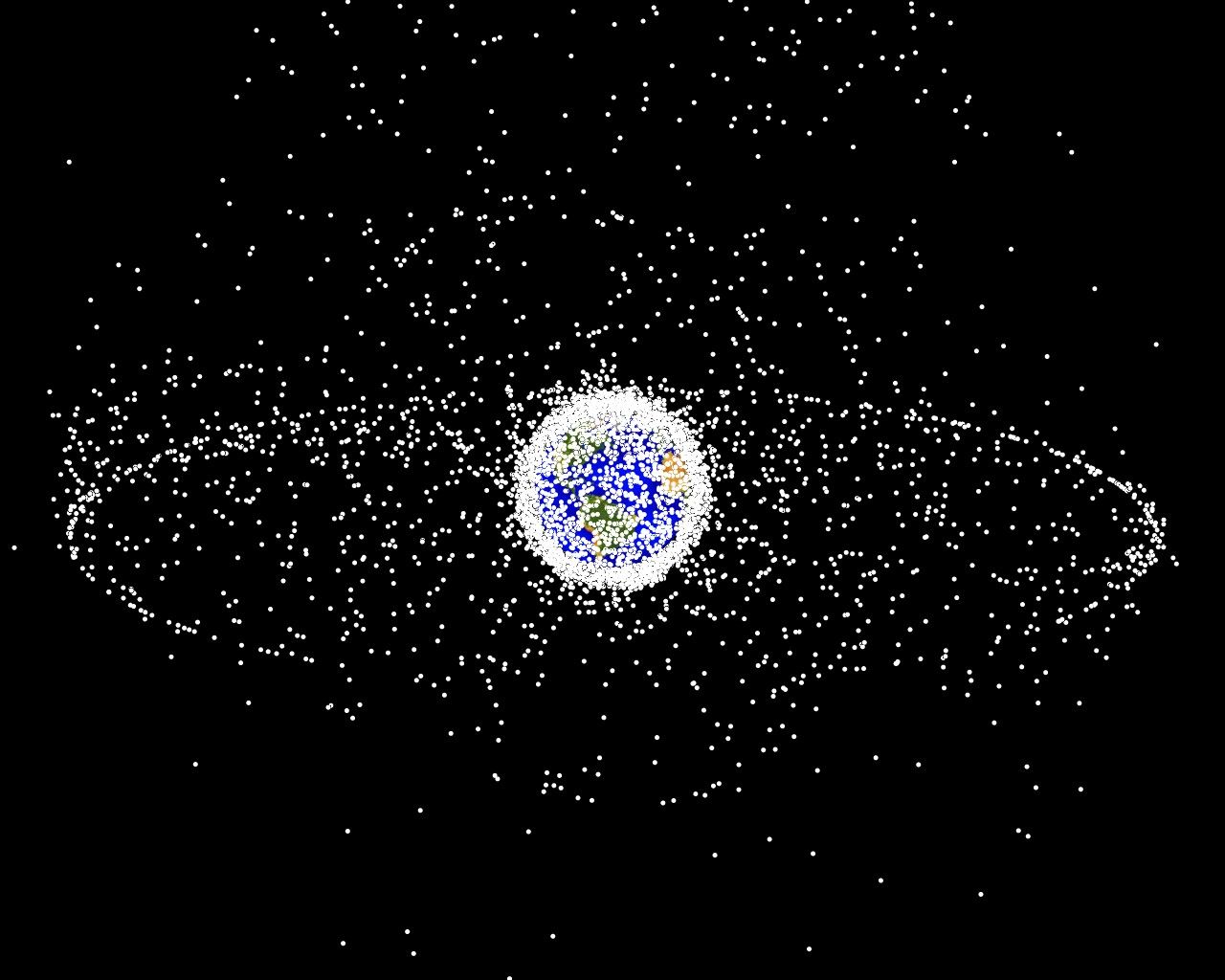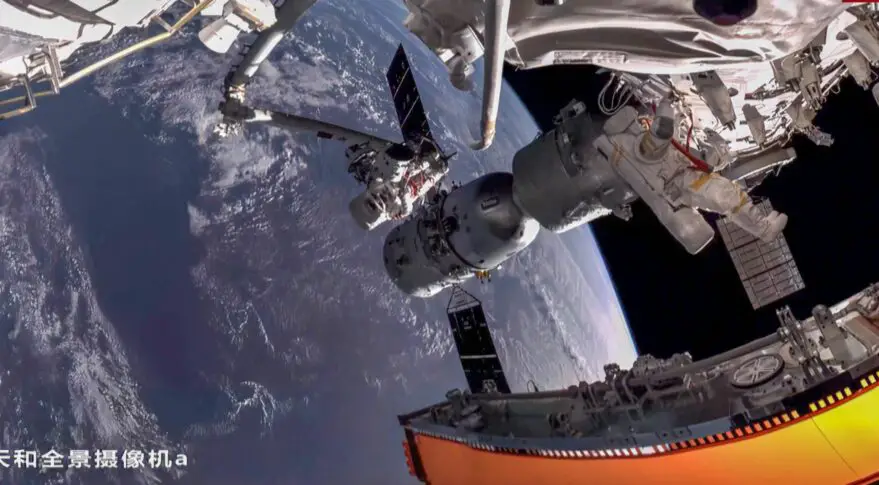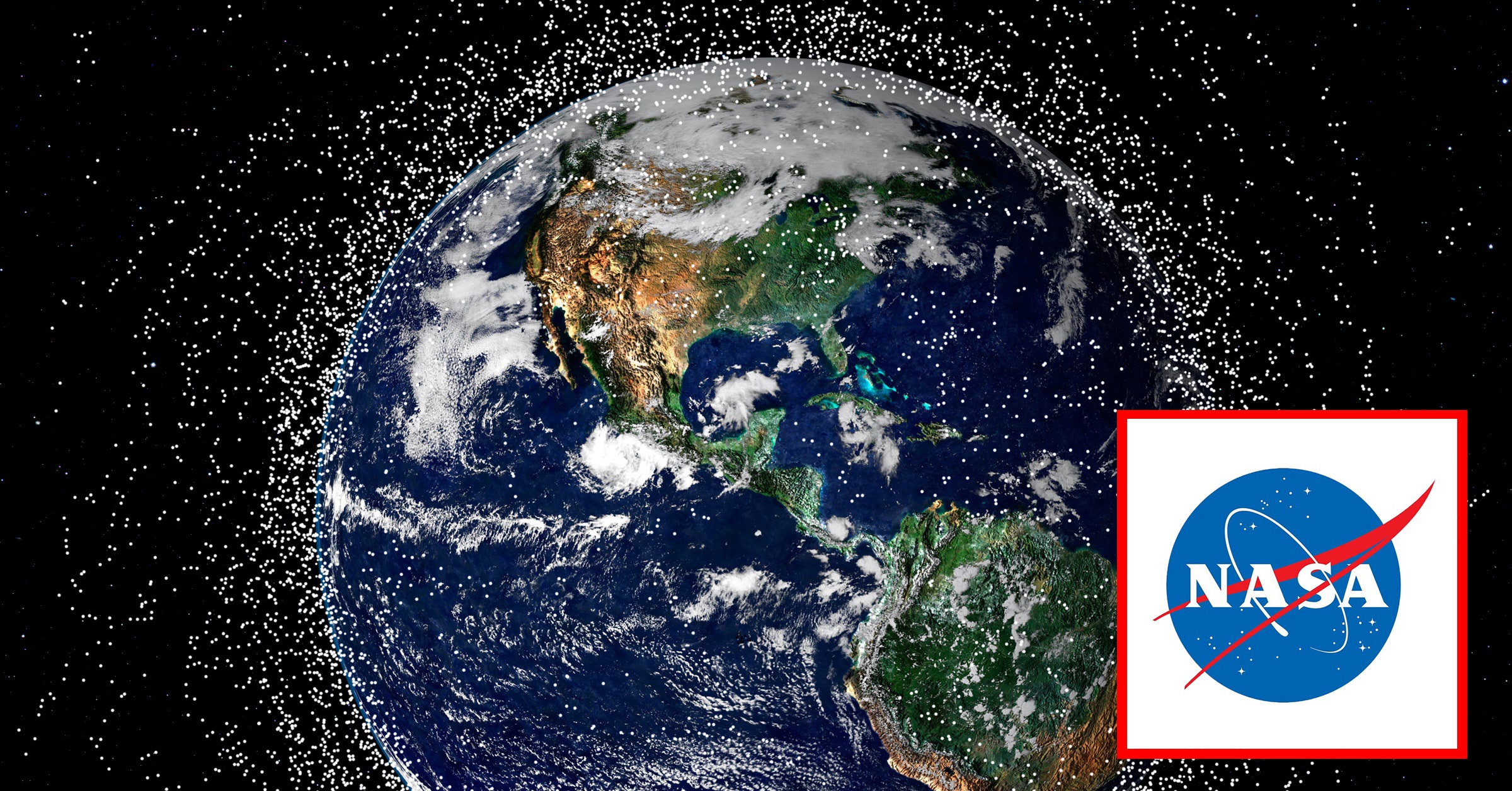One of the largest environmental problems faced by civilization is space debris, and scientists warn that it might take a human catastrophe before the issue is addressed.
More than 500,000 bits of debris are hurtling through space at 17,500mph or ten times the speed of sound. However, others believe the number might be as high as 900,000 pieces.
Items lost by astronauts during spacewalks, including a spatula, tool bag, camera, and glove, and even crystallized human urine, are included in the rubbish.
People used to believe this a long time ago before there were technologies in place to recycle waste and turn urine into potable water for human use.
In the opinion of many experts, the garbage poses a serious risk to future missions, and if humans continue to dump more garbage into orbit, it might render space uninhabitable or worse.
When a person is wounded in space, “I do not believe people will take it as seriously as they should,” says John Crassidis, a mechanical and aerospace engineering professor at the University of Buffalo in New York.
A collision in low earth orbit is so likely that placing anything up there becomes pointless, according to one expert.
When it comes to comparing this problem to ocean pollution, Carolin Frueh, an associate professor at Purdue University, compared it to garbage “simply floating about.”

Space debris “is becoming one of the largest environmental catastrophes, considering what we do on Earth and how huge the issues here,” she warned.
About 28,000 items bigger than 10 centimeters are now circling the Earth, but most of the debris is too tiny for Nasa to monitor.
If they were to crash with another object, these things are huge enough to do considerable harm since they move at such fast speeds. Professor Crassidis observed, “It does not take much to destroy a satellite.”
When Russia launched a missile at one of its long-defunct Soviet satellites last month, it drew criticism for creating more than 1,500 pieces of debris and thousands of smaller particles, according to the US Space Command.
According to US authorities, the aftermath of the anti-missile test now poses a hazard to astronauts on the International Space Station (ISS).
In short, I am disgusted. At the time, Nasa administrator Bill Nelson said, “This is inexcusable.” Incredibly, the Russian government has conducted this test, threatening not just foreign astronauts but also Russian cosmonauts already on the station.
Prof. Frueh said that it may take a decade for those parts to fall to the ground on their own. “The longer the components remain in orbit at higher altitudes,” she continued. I was saddened to see the amount of trash that was generated at such a high height.
Previous anti-satellite tests have occurred. A Chinese test in 2007 at an altitude of around 850 kilometers, which resulted in the creation of thousands of pieces of debris, ushered in an age of calm. Last month, the ISS narrowly avoided a collision with a meteorite.
In 2019, India employed anti-satellite missiles to destroy a test satellite at a height of 300 kilometers, however, the amount of debris it generated was less than that produced by the Chinese launch.
In Professor Crassidis’s view, these missions have been utilized by governments to show off their capabilities. “I believe it is terribly reckless and incredibly dumb.”

International conventions are not in place to prohibit these types of operations, and states who litter space face no sanctions. Efforts by space organizations to clear debris remain in the experimental stages, according to experts, and there are no practical means to remove the waste in any significant sense at this time.
Prof. Frueh says removal services only handle “three or four pieces a year” at the most right now.
Increasing numbers of satellites are being sent into orbit by both developed and developing countries, compounding the situation. The cislunar zone, the area between the Earth and the moon, might be ruined by further trips to the moon.
As a result of this, scientists believe the greatest thing that the world can do right now is to keep track of and identify as much space junk as possible. Similar to climate change, future generations will have to come up with new technologies to address the issue.
What can I say? It is in our nature.” “The conventional way we think is ‘Let us simply push this off to our offspring,'” Professor Crassidis stated. “I think we will be in serious problems in 50 years if nothing is done,” said one expert.
China’s space station maneuvered to avoid Starlink satellites

When SpaceX’s Starlink satellites risked colliding with China’s space station earlier this year, the Chinese government warned the United Nations.
It was reported in a Dec. 6 statement by Chinese authorities under Article V of the Outer Space Treaty that China’s Tianhe space station module avoided a collision with two satellites that came dangerously near on July 1 and October 21.
At 550 kilometers above the Earth’s surface, a usual orbit for Starlink satellites, however, the pair had dropped their heights, perhaps as part of an active deorbiting effort.
The Tianhe module, China’s first space station module, came within a few hundred miles of the duo. During the near approach in October, Tianhe was occupied by the three-person crew of the Shenzhou-12 mission and the current Shenzhou-13 mission.
In accordance with data made public by U.S. space monitoring, Harvard-Smithsonian Center for Astrophysics satellite tracker Jonathan McDowell verified the two near approaches and avoidance burns. Three kilometers would have gotten us to the October pass.
I confirmed the Starlink/Chinese Space Station conjunctions on Jul 1 at 1315 UTC (S-1095) and Oct 21 at 2200 UTC (S-2305), with CSS orbit adjustmets at about 0950 UTC Jul 1 and 0316 UTC Oct 21. The Oct passes shown here: pic.twitter.com/DmbIucpRPF
— Jonathan McDowell (@planet4589) December 28, 2021
“States Parties to the Treaty shall bear international responsibility for national activities in outer space, including the moon and other celestial bodies, whether such activities are carried out by governmental agencies or by non-governmental entities, and for assuring that national activities are carried out in accordance with the provisions set forth in the present Treaty,” the note from China stated.
The “A/AC.105 UN series is normally ‘we did this, watch out,’ not ‘we are angry someone else did this,’ according to McDowell, making this complaint exceedingly rare.
“I am sure people will say things like, ‘did you know the ISS had to avoid debris from the Chinese ASAT more than once?'” But I believe this is just another indicator that we are entering a fundamentally new era in terms of low-Earth orbit congestion,” McDowell said.
A request for comment on the issue has so far gone unanswered by SpaceX.
Nearly 1,950 Starlink satellites have been deployed, with roughly 1,800 in orbit and delivering internet services. The US Federal Communications Commission has already authorized SpaceX’s plans for 12,000 satellites, and the company has filed papers for 30,000 more at various altitudes.
Following Chinese media coverage of the tactics, Chinese online users have harshly attacked Elon Musk, according to Reuters.
With the two near approaches, the Global Times, a Beijing-based tabloid infamous for patriotic screeds, reported a Chinese aerospace pundit Dec. 27, speculating SpaceX may have “tried China’s sensibility in space.”
Competitors, astronomers, and others have questioned and condemned SpaceX’s Starlink project, with one industry executive stating, “They do not play well with others.”
The Tianhe space station’s 22-metric-ton, 16.6-meter-long, and 4.2-meter-diameter Tianhe module were launched in April as the first of three modules that will make up the Tiangong space station. The module is now docked with two Tianzhou cargo spacecraft and the Shenzhou-13 spacecraft.
In the event of an emergency, the Long March 2F and Shenzhou-14 spacecraft are near-ready at the Jiuquan launch complex in the Gobi Desert. According to sources, such a launch should take nine days.
China’s human spaceflight Agency (CMSA), the Beijing Aerospace Flight Control Center (BACC), and the China Aerospace Science and Technology Corp. (CASC) have been working to build the space station and adapt to the challenges of long-term crewed missions in low-Earth orbit, including cargo supply, spacewalks, and maintenance.
To avoid debris, a spacecraft must be able to detect, monitor, and anticipate the paths of objects in low Earth orbit, and then move the spacecraft appropriately.
Several times, the International Space Station has had to alter its trajectory to avoid debris, including pieces from a Chinese military damaging anti-satellite missile test in 2007—the greatest debris-creating episode to date—and rocket upper stages from other nations.
In a subsequent tweet, McDowell speculates that the Starlink satellite involved in the July 1 incident may have done an avoidance burn, but that no communication took place.
A 2019 event in which an ESA spacecraft narrowly avoided colliding with a Starlink satellite has previously highlighted the need of satellite operators to work together.

“It is no longer a question of whether or not we should trust their algorithms: with Starlink now owning and operating the largest percentage of operational LEO satellites, we have no choice but to trust their algorithms,” said Christopher Newman, a professor of space law and policy at Northumbria University in the United Kingdom. “When space diplomacy relies heavily on openness, this creates serious governance issues.”
Collisions are growing more likely as low Earth orbit becomes more congested. The expanding debris issue poses a danger to space infrastructure, which today supports many parts of modern life.
Debris-removal spacecraft and missions, as well as risk-reduction technologies and policies, are in the works. However, Starlink is not the only constellation that presents new obstacles.
Other firms, such as OneWeb, as well as governments such as China, are developing LEO mega clusters. China established a corporation earlier this year to oversee the building of a 13,000-satellite constellation for LEO communications.
China has yet to respond to a Russian ASAT test on November 15 that resulted in debris that jeopardized the International Space Station. “We observed relevant information and that Russia has yet to reply,” Zhao Lijian, a spokeswoman for China’s foreign ministry, said in a Nov. 16 news conference. I believe it is too early to make any observations.”

